Abstract
The eggs of Utetheisa ornatrix contain pyrrolizidine alkaloids. These compounds are contributed by both parents, who sequester them as larvae from their food plants. Females receive alkaloid from the males at mating, apparently by seminal infusion, and transmit this alkaloid together with alkaloid of their own to the eggs. Field and laboratory tests showed that the alkaloids protect eggs from predators. The alkaloidal contribution of the male, although smaller than that of the female, itself provides significant egg protection. A previously identified pheromone, derived by the male from the alkaloid and emitted during precopulatory behavior, may announce the male alkaloidal worth to the female.
Full text
PDF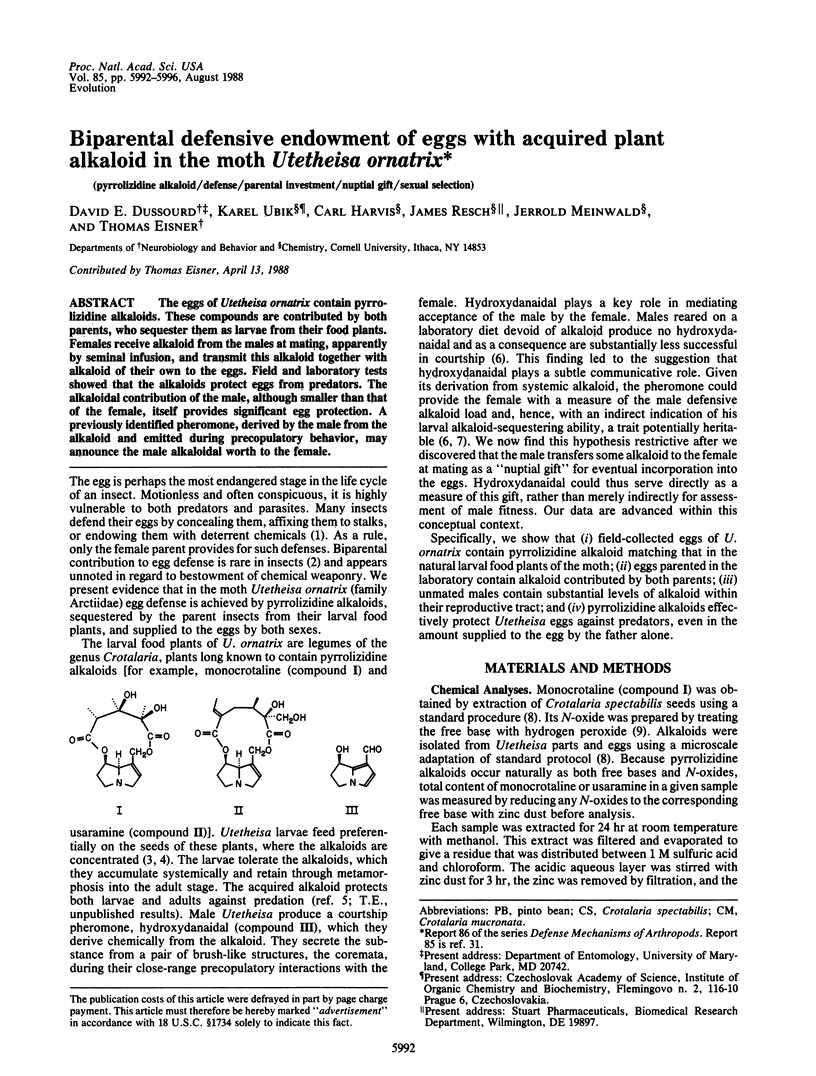
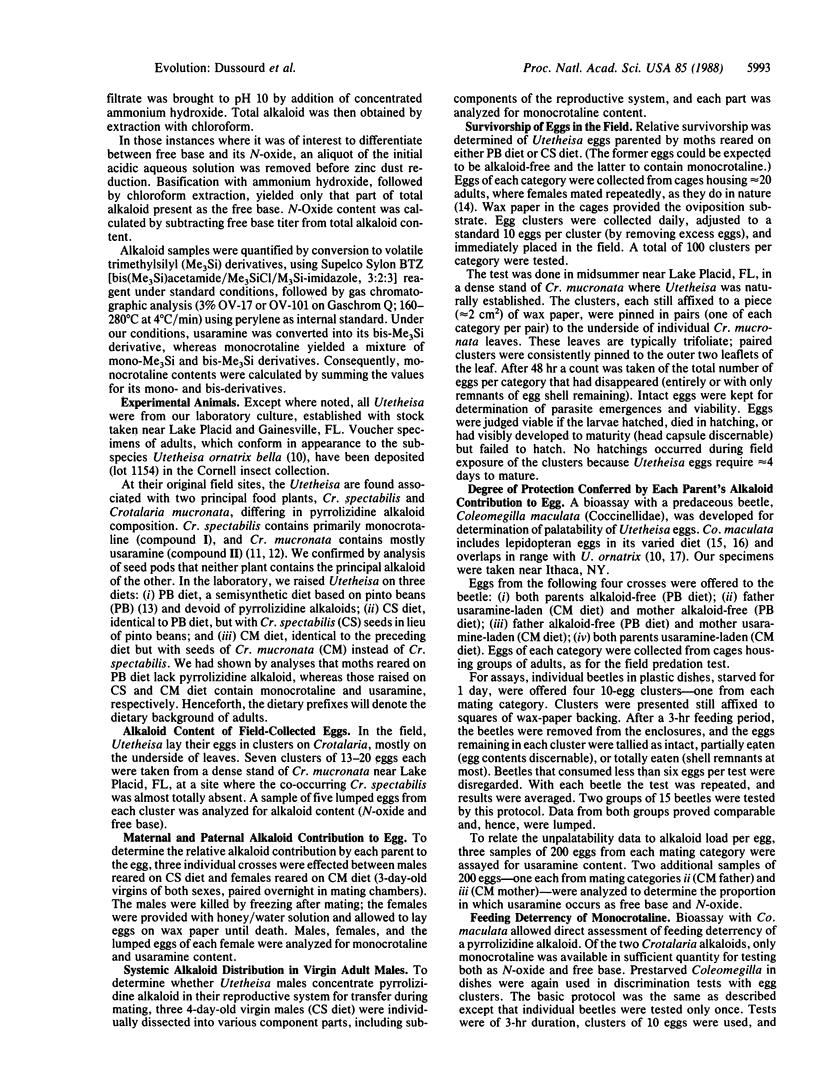
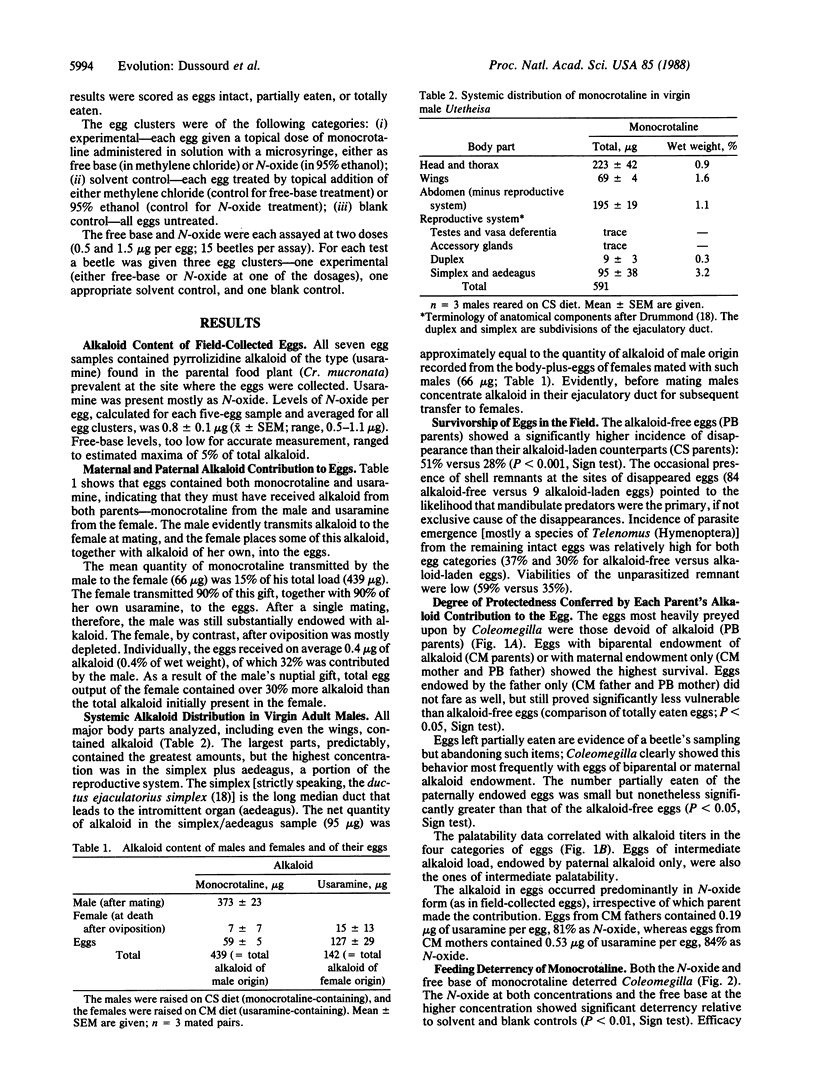
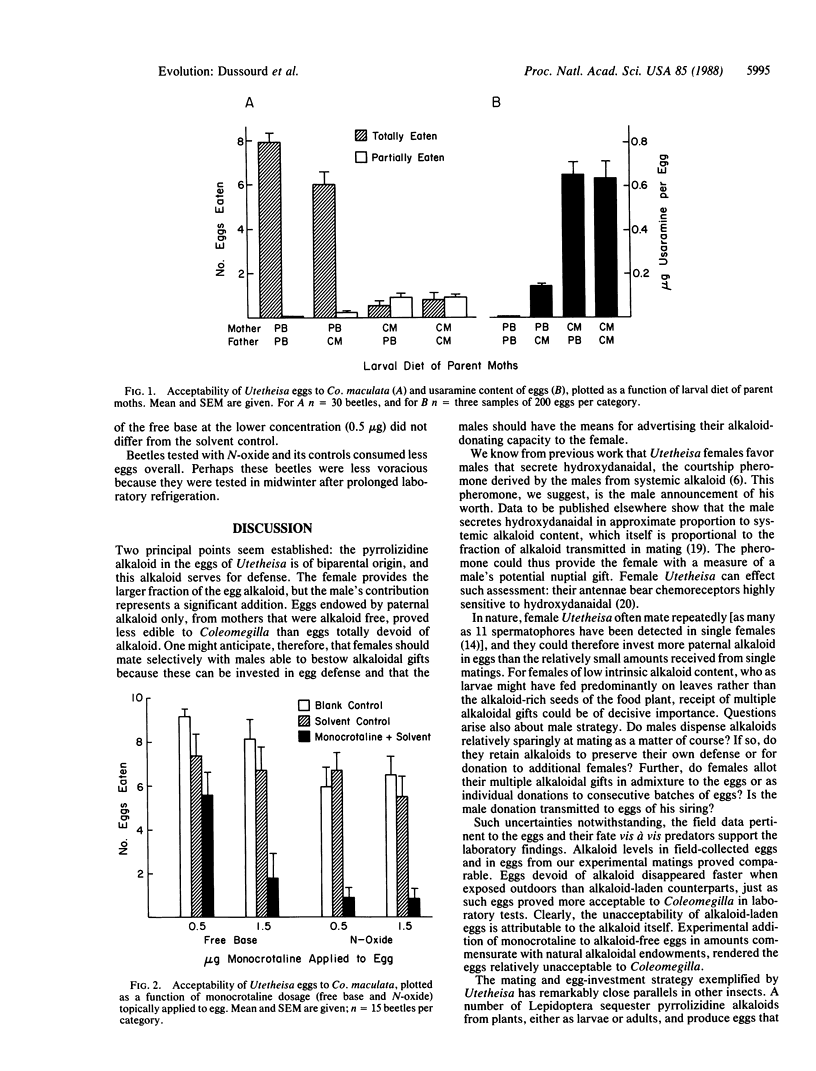
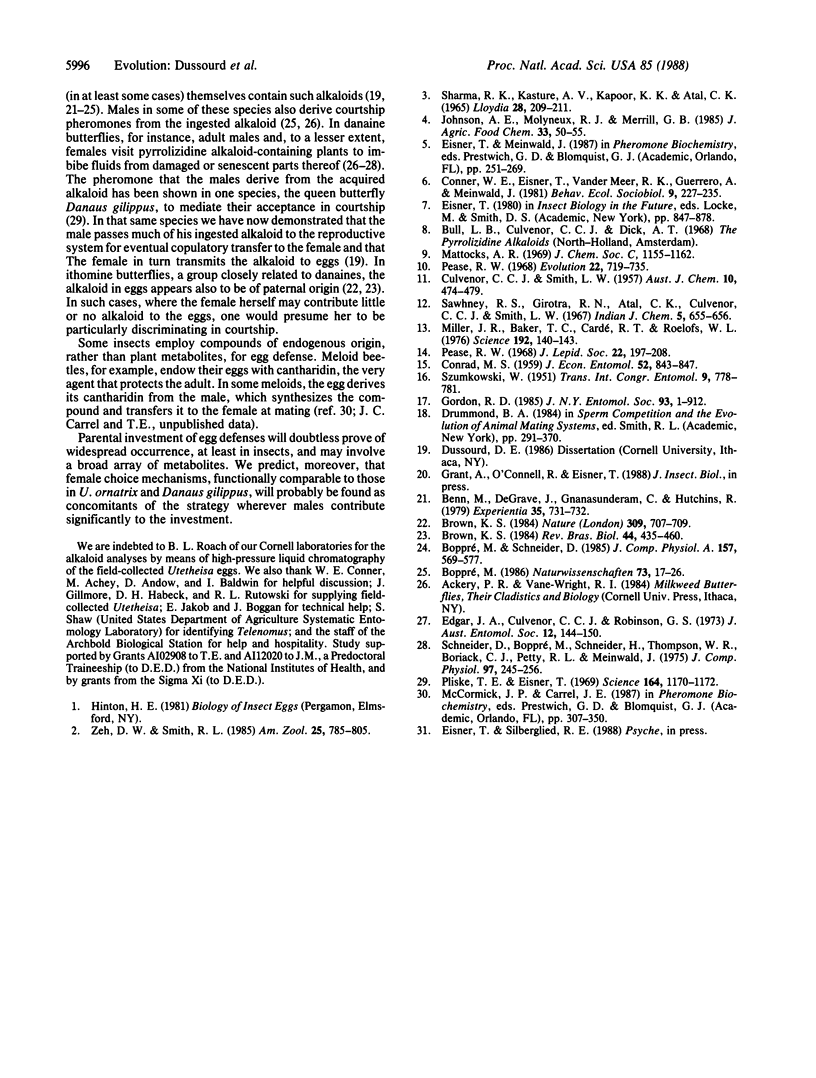
Selected References
These references are in PubMed. This may not be the complete list of references from this article.
- Mattocks A. R. Dihydropyrrolizine derivatives from unsaturated pyrrolizidine alkaloids. J Chem Soc Perkin 1. 1969;8:1155–1162. doi: 10.1039/j39690001155. [DOI] [PubMed] [Google Scholar]
- Miller J. R., Baker T. C., Carde R. T., Roelofs W. L. Reinvestigation of oak leaf roller sex pheromone components and the hypothesis that they vary with diet. Science. 1976 Apr 9;192(4235):140–143. doi: 10.1126/science.1257758. [DOI] [PubMed] [Google Scholar]
- Pliske T. E., Eisner T. Sex pheromone of the queen butterfly: biology. Science. 1969 Jun 6;164(3884):1170–1172. doi: 10.1126/science.164.3884.1170. [DOI] [PubMed] [Google Scholar]


